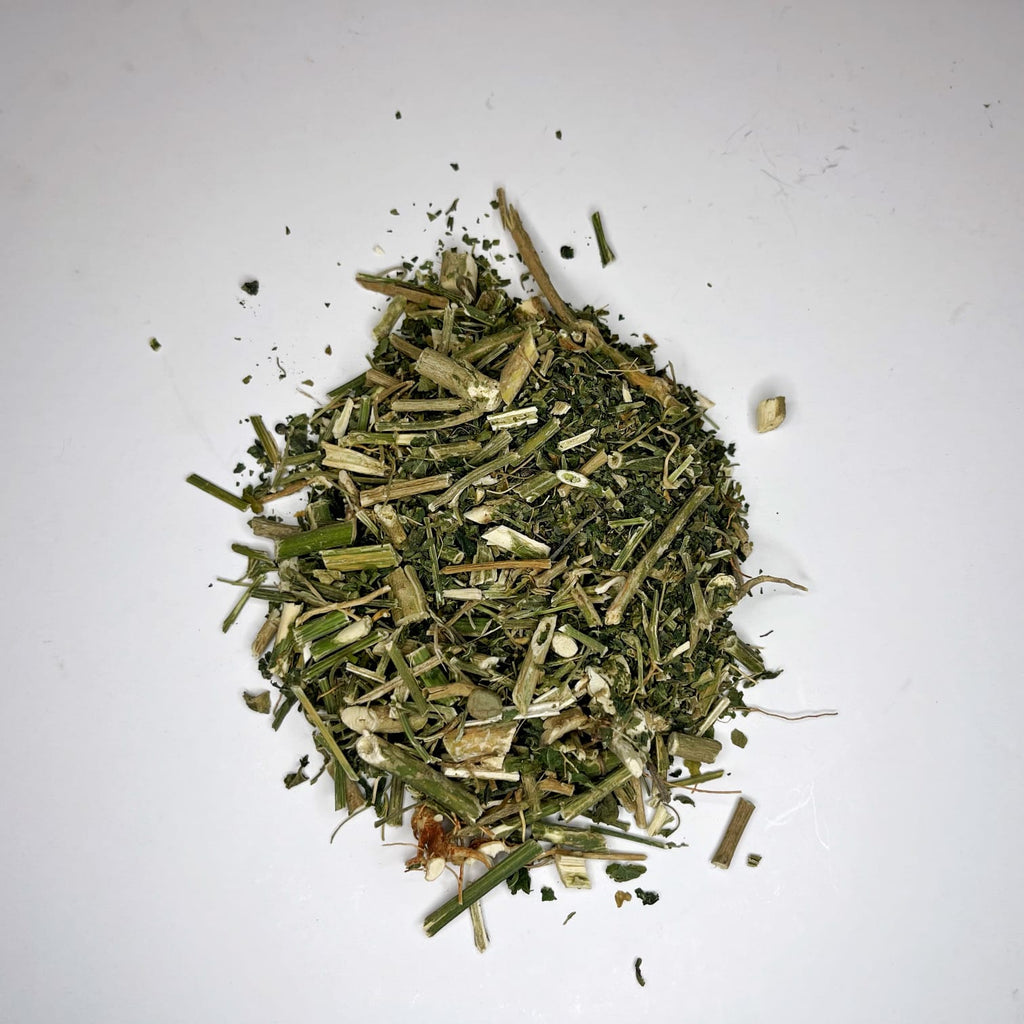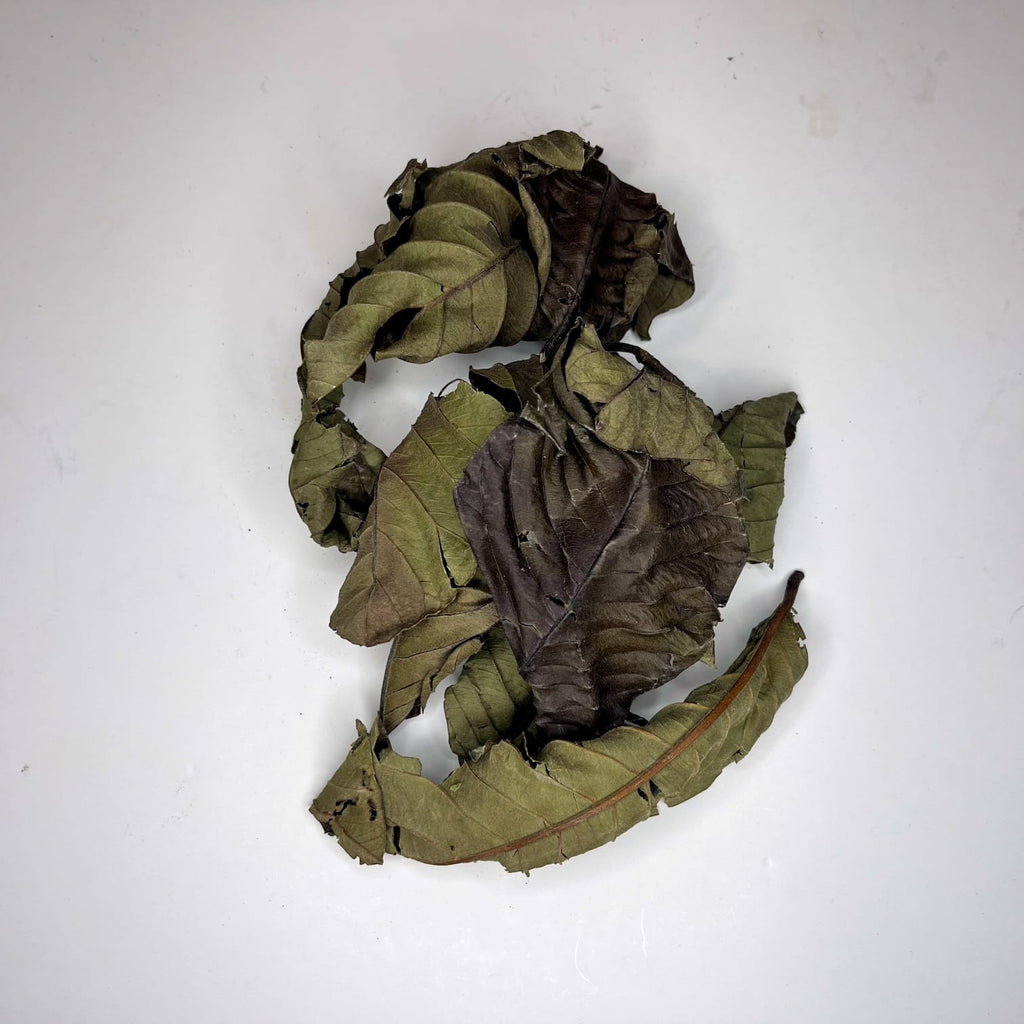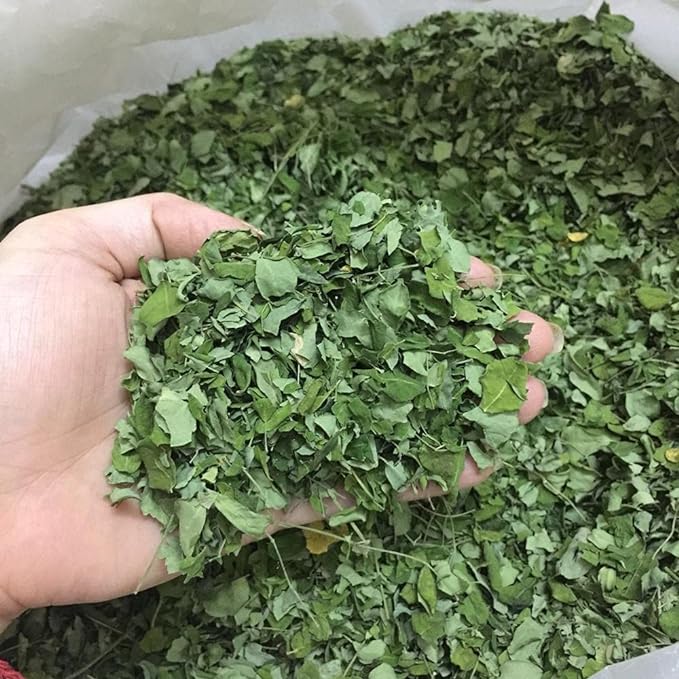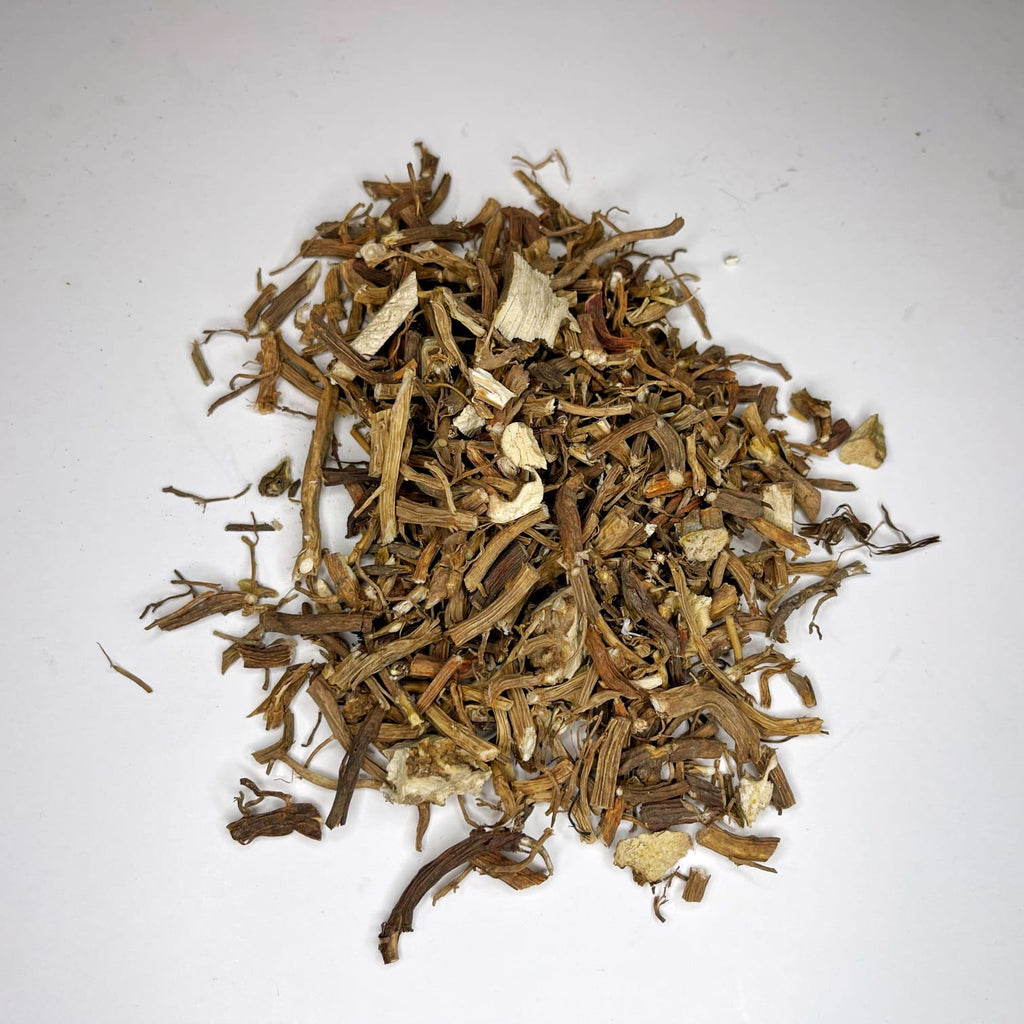
Dried Dogblood Bush

Rivina humilis, commonly known as pigeonberry, rougeplant, baby pepper, bloodberry or dogblood bush, is a flowering plant native to the Americas. The plant is known for its small red berries and is often grown for ornamental purposes. In some regions, it may have traditional uses, but it's not as well-known or extensively studied as some other herbs.
If you have dried Rivina humilis leaves, it's important to note that information about its uses and properties might be limited, and there may be regional or traditional knowledge that isn't widely documented.
Potential uses of Rivina humilis might include:
- Ornamental Plant: The plant is sometimes grown for its attractive red berries and is used ornamentally in gardens.
- Traditional Medicine: In some cultures, parts of the plant might be used in traditional medicine. This could include uses such as an herbal remedy for certain ailments. However, specific details can vary, and traditional uses may not be well-documented.
- Wildlife Attraction: The berries of Rivina humilis are known to attract birds, particularly pigeons, hence the common name "pigeonberry."
If you're interested in using dried Rivina humilis leaves, you may consider making a tea or infusion. Here's a basic guide:
Rivina Humilis Tea:
Ingredients:
- Dried Rivina humilis leaves
- Water
Instructions:
- Boil water in a pot.
- Add a small handful of dried Rivina humilis leaves to the boiling water.
- Allow the leaves to steep for about 5-10 minutes.
- Strain the tea to remove the leaves.
- You can drink the tea as is or sweeten it with honey or another natural sweetener if desired.
Before using Rivina humilis or any plant for medicinal purposes, it's crucial to exercise caution. Consult with a knowledgeable herbalist, botanist, or healthcare professional, especially if you're pregnant, nursing, taking medications, or have underlying health conditions. Always ensure that you have correctly identified the plant and that it is safe for consumption or use.
Top of Form



